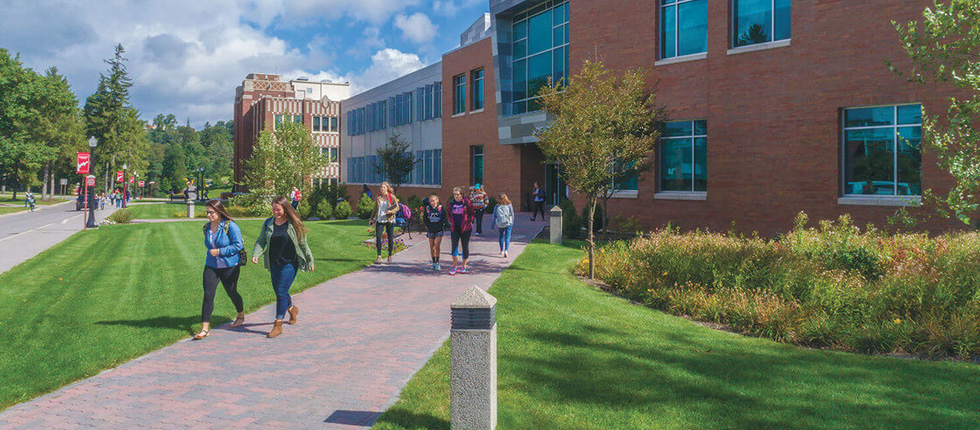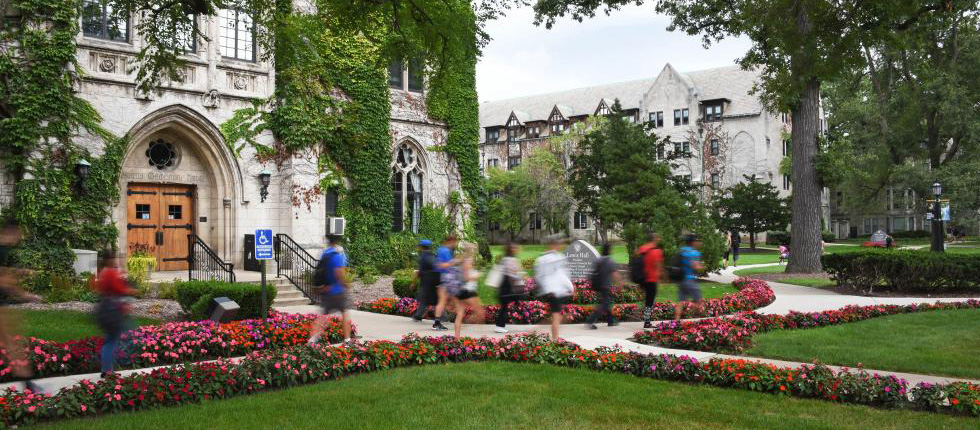In late 2021, the College of Western Idaho (CWI) needed to address a consistent enrollment decline and improve student retention. With an ambitious vision to improve and optimize its technological infrastructure and student outreach, CWI sought to build a best-in-class system to enhance student engagement and elevate enrollment strategies. To ensure that data and technology were aligned with CWI’s growth objectives, the college partnered with Collegis Education to analyze their combined impact. Were its data and tech aligned for impact, or were gaps hindering progress and creating unnecessary burdens across the team?
Key Takeaways
- Six consecutive terms of YoY enrollment growth
- Experienced the highest YoY increase in persistence in history of the college from Fall 2022 to Fall 2023
- Consistent improvement in term-over-term retention
CHALLENGES:
- Declining enrollment
- No established retention strategy
- Lack of CRM
- Underutilized LMS
- Siloed technology and data systems
SOLUTIONS:
- Connected Core®
- Advanced analytics + business intelligence
- LMS support
- Website optimization
- Data-driven outreach and support for students identified as at-risk
Strategy
Collegis Education and CWI began collaborating on building a best-in-class student journey from the point of initial inquiry through graduation.
A comprehensive evaluation of existing CWI systems allowed Collegis to assess the college’s digital readiness, technology infrastructure, and enrollment ecosystem to understand how they aligned with its growth objectives. The partnership quickly proceeded from consultation to implementation.
Collegis prescribed a set of solutions to enhance student engagement from first contact and elevate the school’s enrollment strategies:
- Connected Core® to unite siloed systems, data sets, and other enrollment technologies, providing more accurate, actionable, unified institutional intelligence with clear visualizations to support data-enabled decision-making at all levels.
- Website optimization to improve conversion and deliver a student-centric digital experience that supports the objectives, goals, and mission.
- Prospective student nurturing campaigns with a messaging protocol designed to drive conversion and prospective student engagement with CWI.
Collaborating closely with CWI, Collegis developed a well-defined student retention strategy that established meaningful student-advisor relationships early on, ensuring students felt supported from their first interaction onward.
- Enrollment conversation training gave student-facing staff the tools to drive positive experiences for CWI learners while embracing a liaison approach to student engagement.
- Collegis student success coaches conducted proactive outreach to engage students while leveraging an at-risk alert system to drive intervention. This early alert system flags students needing support based on learning management system (LMS) data on attendance, current grades, and assignment completion.
Results: Average YoY growth each semester since our partnership began has averaged 5%
By working with Collegis, CWI could focus on its student journey and how it could better use data and technology to deliver superior student engagements and reach its growth targets. This has helped not only stop, but reverse historical enrollment declines. In 2024, CWI projected year-over-year growth for the sixth consecutive academic term. The school has achieved an average year-over-year term growth of 5%, with a trendline for fall 2024 of over 9% growth.
Value-based conversations with prospective students have resulted in increased applications. Further, pre-start engagement from the advising and student success coaching teams has increased registrations from admitted students.
By fostering a culture of meaningful interaction and support for students, CWI paved the way for improved student retention. The LMS-based at-risk model has driven 19,000+ proactive student engagements and interventions in one academic year.
Within just one year of implementing these targeted strategies, CWI witnessed a remarkable increase in retention rates, all while alleviating the workload on faculty and staff. Similar retention strategies deployed by other Collegis partner institutions have yielded term-over-term retention rates exceeding 90%, underscoring the effectiveness of our approach.
With a proven retention strategy and access to a proactive model, CWI can now build out its internal retention capabilities and plans to take over the student success coaching function.
The Future
CWI’s commitment to embracing change and being agile is demonstrated by the school’s evolving partnership with Collegis to exceed industry best practices and realize sustained growth. Ongoing services and incremental work are targeting LMS initiatives to stabilize, standardize, optimize, and transform CWI’s instance of Blackboard Learn and redesign its new student orientation, among other things.
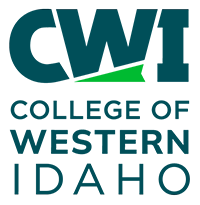
Institution Type:
Community College
Location:
Treasure Valley, Idaho
Total Enrollment:
30,000+
Other Case Studies
Transform Challenges Into Opportunities
Facing challenges in enrollment, retention, or tech integration? Seeking growth in new markets? Our strategic insights pave a clear path for overcoming obstacles and driving success in higher education.
Unlock the transformative potential within your institution – partner with us to turn today’s roadblocks into tomorrow’s achievements. Let’s chat.
Celebrating expertise with creative digital campaign
In 2023, Saint Louis University’s (SLU) School for Professional Studies (SPS) celebrated its 60th anniversary. This offered a unique opportunity to highlight the school’s six decades of leadership and innovation in adult and online education — an area most schools have only recently entered. SLU partnered with Collegis to develop an integrated creative and digital campaign to bring this new messaging to market.
Challenge: Highlighting expertise in adult and online education
SLU has a storied history and expertise in online and adult education — a key advantage for aspiring adult learners. Collegis was challenged with bringing this message to market in an impactful way, which was achieved through an awareness media campaign centered on newly produced brand video content.
Solution: Authentic video storytelling and strategic media placement
The videos amplify the authentic voices of real SLU students, showcasing diverse narratives about educational experiences and outcomes. Going beyond campus, the production captured moments at students’ homes and workplaces. These personal glimpses help viewers identify with the subjects and build trust in the brand, illustrating SLU’s understanding of adult learners’ wants and needs.
Collegis then developed a paid media strategy that included connected TV (CTV) and cross-device video to maximize impact through multiple touchpoints. The campaign’s primary objective was driving awareness, which was measured by video completion rate, brand lift, and brand search impact.
Example campaign video
Results: Increased brand awareness and conversions
The 60th anniversary campaign was successful in raising awareness of SLU’s School for Professional Studies. The data supports that the awareness media contributed significantly to both brand health and revenue goals. The results were as follows:
287% return on ad spend for the campaign
5.9 million CTV and cross-device video impressions throughout Missouri and Illinois
89% video completion rate
10.7% lift in brand awareness, 3.5% ad recall lift, and 4.2% lift in consideration
541% increase in brand PPC spend while reducing cost per conversion by 44%
1,050% increase in brand PPC conversions YoY
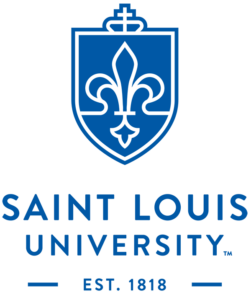
About Saint Louis University
Institution Type:
Catholic, Jesuit institution
Location:
St. Louis, Missouri
Student Enrollment:
13,500
Services:
- Unique campaign and brand messaging
- Video planning, production, and editing
- Creative direction and execution
- Paid media strategy and implementation
- Performance metrics for all assets
Key Results:
- 10.7% lift in brand awareness
- 1,050% increase in PPC brand conversions
- 287% return on ad spend
Other Case Studies
Transform Challenges Into Opportunities
Facing challenges in enrollment, retention, or tech integration? Seeking growth in new markets? Our strategic insights pave a clear path for overcoming obstacles and driving success in higher education.
Unlock the transformative potential within your institution – partner with us to turn today’s roadblocks into tomorrow’s achievements. Let’s chat.
With undergraduate enrollment declining by 4.2% over the last two years, institutions must take a proactive approach to recruitment and retention. While some schools struggle, others are successfully growing their enrollments by leveraging data-driven strategies and student-focused engagement tactics.
Our latest infographic highlights the key strategies that have helped institutions increase inquiries, improve conversion rates, and optimize marketing spend.
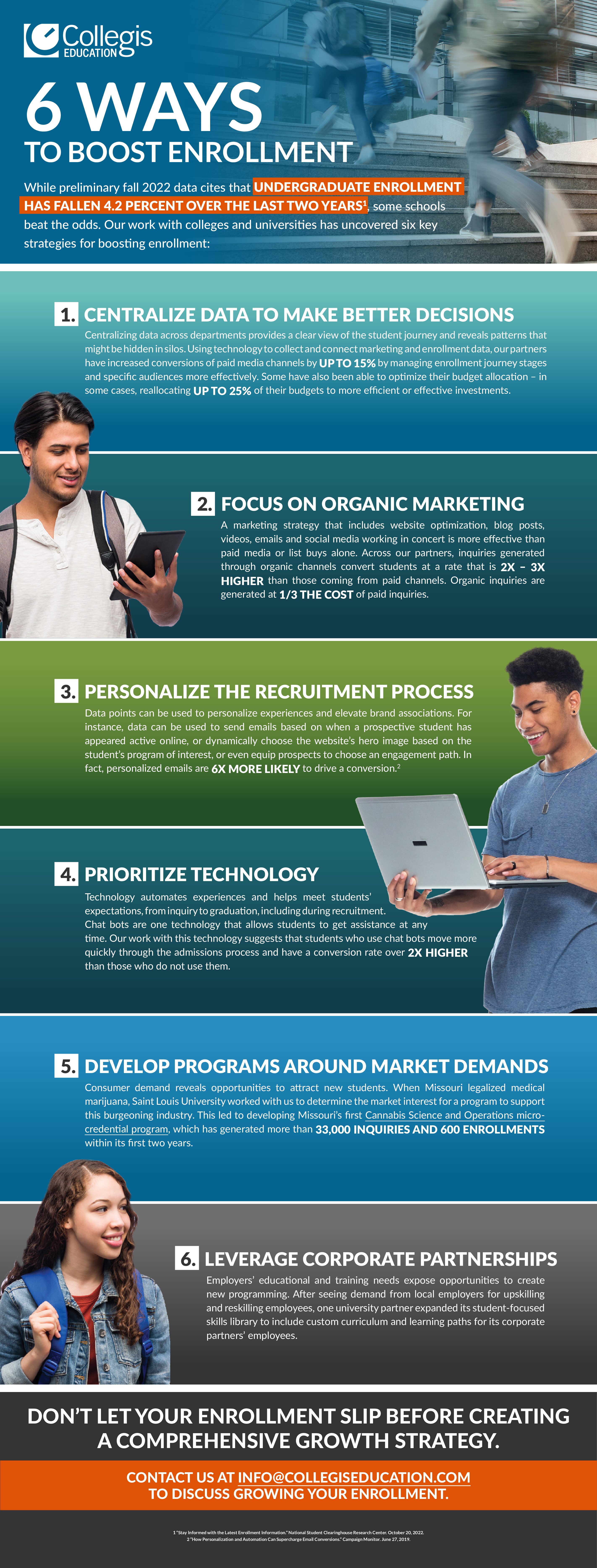
Innovation Starts Here
Higher ed is evolving — don’t get left behind. Explore how Collegis can help your institution thrive.
Future-Proofing Your Higher Education Ecosystem [eBook]
An institution’s long-term sustainability, including enrollment growth, anytime/anywhere learning, student retention, exceptional student experiences, and operational efficiencies is only possible with a data-enabled, technology ecosystem.
Higher ed leaders who prioritize data and technology and elevate their IT department’s role as a strategic partner within their institution will be best positioned for long-term sustainability.
To help college and university leaders create an integrated technology ecosystem, this ebook offers key considerations for the tech initiatives that drive effective transformation in higher ed.
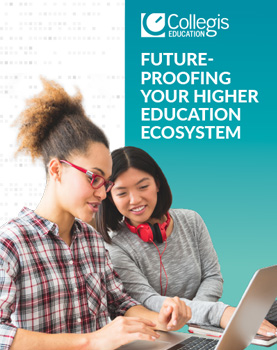
Key points addressed
In this ebook, you’ll learn more about the following:
- Four barriers preventing schools from achieving value from their technology
- Six areas to focus on when assessing your technology environment
- Four Stages to transform your technology ecosystem
- Three Steps to realizing value from your data
Download Now
Transform Challenges Into Opportunities
Facing challenges in enrollment, retention, or tech integration? Seeking growth in new markets? Our strategic insights pave a clear path for overcoming obstacles and driving success in higher education.
Unlock the transformative potential within your institution – partner with us to turn today’s roadblocks into tomorrow’s achievements. Let’s chat.
The buzz around artificial intelligence (AI) is loud and growing—and for good reason. Maybe you’ve already used an AI tool to transcribe a video call or pore through reams of research to find just the right citation in seconds. If so, you already know how these new AI capabilities can easily accomplish tasks that were just too labor intensive or not technically feasible until now.
One of the most promising opportunities of AI—and a big one that colleges and universities should be laser-focused on—is the ability to create new streams of data and intelligence.
One of the most promising opportunities of AI—and a big one that colleges and universities should be laser-focused on—is the ability to create new streams of data and intelligence. AI has the potential to fast-forward your institution’s transition to data-driven decision-making, so you can move confidently from thought to action with insights that just weren’t possible before.
The Value of Tech That Learns
In the past, we’ve used very basic techniques to catalog and categorize data. As just one example, think about how you measure the strength of your brand. Today marketers can categorize social media posts and tweets in a rudimentary way using keywords to get a feel for how a brand is being received.
This is known as sentiment analysis, and for humans, it is both time-consuming and limiting.
For instance, let’s say you search for sentiment cues using pre-selected keywords (examples: like, love, best, worst, hate). You may be missing other keywords that could have something valuable to tell you. Was the tweet about a competitor? Was that post a feature request? Are you missing a support issue? A compliment? A comparison?
What makes AI so well-suited for tasks like this is machine learning and its flexibility to understand context. Because AI can recognize context, we can now analyze beyond keywords in way we couldn’t before. We can use AI to answer questions like:
- “What is the key concern?”
- “What is the primary topic?”
- “What is the recommended action?”
Ready for a Smarter Way Forward?
Higher ed is hard — but you don’t have to figure it out alone. We can help you transform challenges into opportunities.
Collect, Connect and Activate Data in the Age of AI
One of the most exciting opportunities with artificial intelligence in higher education is the ability to create new streams of data that weren’t quantifiable before, giving schools more ways to collect, connect and activate data as intelligence. Here are some examples where AI can make data more impactful across campus:
- Enrollment data: Collect and analyze data from multiple channels—website analytics, social media metrics and email engagement rates— to understand user intent and reveal patterns in prospect behavior throughout the funnel.
- Marketing personalization data: Instantly scan and sort incoming emails or chats based on interest in specific schools or majors to deliver targeted and relevant outreach based on individual preferences.
- Social listening data: Identify and extract sentiment data to measure response to an alumni event or a new program offering.
- Student performance data: Use data from automated grading to learn how long students spend on certain tasks or what types of questions they struggle with to identify the need for curriculum updates or remedial instruction.
- Help desk call data: Analyze recorded calls and chats to monitor performance issues and accurately target staff resources and future investment.
Our recommended approach? Start thinking about how AI can expand on the data you already have.
These new streams of intelligence can drive new types of insight that simply weren’t functionally (or financially) possible before.
Innovation Starts Here
Higher ed is evolving — don’t get left behind. Explore how Collegis can help your institution thrive.
The enrollment funnel is a time-honored marketing concept. It defines a sequence of events a prospective student goes through before reaching an enrollment decision. However, the current college market demands we rethink how colleges and universities can best nurture prospective students through the funnel and into the classroom — while prioritizing their marketing and recruitment efforts to do so as cost-effectively as possible.
Mega Universities’ impact on enrollment
Overall enrollment declines have shrunk the number of available prospects and made them harder to convert to registered students. However, from 2011 to 2021, the top 5 mega universities added more than 400K students. How? Online options and aggressive growth from these mega universities have weakened the geographic moats that once defined prime markets for non-national schools.
400,000
The number of students added by the top 5 mega universities between 2011 and 2021
Yet, our experience working with dozens of partners to launch and grow online programs continues to show that a sizable portion of your online enrollment will reside within 50 miles of your institution — and that’s where you should focus your efforts. Spend more time with the prospects you have by thinking beyond list buys and large paid media investments to uncover the ROI of mid-funnel activities.
Focus on middle of funnel through digital marketing
Today’s prospects are carefully weighing their options. They are looking closely at cost and how they’ll finance their education. They are considering practical realities, such as which programs are likely to result in stable job opportunities later. And many are forgoing their top college choices in lieu of less expensive options. All of which happens during the consideration phase of the enrollment funnel.
Prospects who are in the mid-funnel consideration phase have already expressed interest and are ready to engage with you — and colleges that nurture these high-potential prospects have greater success in meeting enrollment goals. And because prospects get to know more about your institution (and vice versa), you’re more likely to enroll “right-fit” students. These goals are achieved through integrating the college’s marketing and admissions teams to create a multi-layered activity approach.
Schools should leverage digital channels to reach and engage with prospective students where they are, such as social media, email, search engines, livestreaming, online advertising, web content and more. Then, use data and marketing insights to help your admissions team craft relevant, purposeful outreach plans that encourage positive associations with your brand.
Elongating the enrollment funnel
The enrollment funnel has typically been separated into several stages: awareness, interest, consideration, intent and inquiry. But it’s a misconception to think the marketing funnel stops at the point of inquiry. That’s not the end of the journey from the student’s point of view.
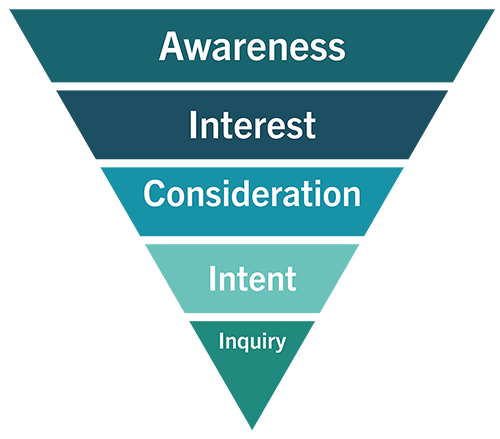
The recruitment phase
Inquiry is the beginning of the recruitment phase, a period that demands an equal commitment to outreach and engagement and deserves an elongated understanding of the funnel:
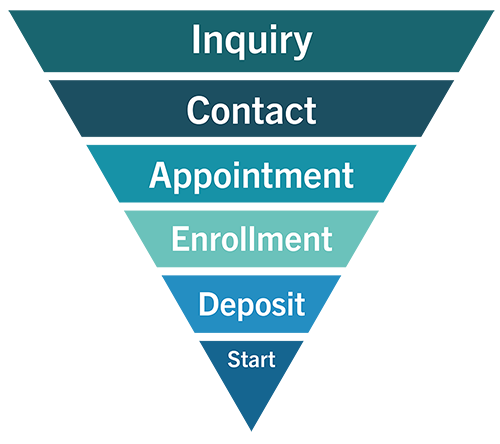
Rethink outreach and engagement in higher ed
Marketing can extend its impact beyond the inquiry phase by focusing on:
- Prospect Experience
- Continued Engagement via Marketing Automation
- Personalization
- Retargeting
- Data Enablement
In assigning activities to new funnel phases, keep in mind the effectiveness and suitability of a channel to each phase of the funnel.
Considerations for your in-house infrastructure
To sustain engagement throughout an elongated funnel, your organizational structure and digital marketing strategies may need to evolve, including:
- Running marketing efforts alongside recruitment
- Adopting measurement systems to cover the period from inquiry to start
- Identifying which channels are best suited to engagement at each stage
- Determining how to structure your portfolio of channels to get the best performance
Invest in a balanced marketing mix
Channels have a different invest and return profile, with the lasting investment impact captured by the annuity effect (in other words, the long-term pay-off of a marketing expenditure). Focusing too much on paid media misses the higher end of the funnel, which represents an important area of investment in for future terms.
For example, at the “strong” end of the annuity scale is the school’s website, which can provide a continual stream of high-potential, organic prospects if properly maintained. At the “weak” end of the annuity scale are paid search and display advertising. These are best for top-of-funnel awareness building but are short-lived in effect.
| CHANNEL | TARGETING | ANNUITY EFFECT |
| Digital Marketing | Versatile | Varies |
| Website/Organic Search | High to Mid Funnel | Strong |
| Corporate Relationships | All | Strong |
| PR/Organic Social | PR/Organic Social | Moderate |
| Alumni Referrals | High to Mid Funnel | Moderate |
| Paid Search (Program Level) | Mid Funnel | Weak |
Like an investment portfolio, a college’s marketing mix should be diversified, balancing paid and organic, top-, mid- and bottom-of-funnel channels, and capturing annuity effect where possible. And like investments, the mix should be frequently evaluated on performance and rebalanced when needed.
As you consider your marketing mix, and assignment of channel to where it best performs and has the greatest annuity value, digital marketing should play a major role.
Summary: A fresh take on the enrollment funnel
As the college market matures, schools will need to adjust tactics to continue to capture their share of prospective students.
Elongating the funnel and extending marketing outreach through enrollment maintains engagement all the way down the funnel.
Rather than being a primary channel, paid media needs to take its place alongside organic channels and play an appropriate role in the marketing mix, justified by performance.
Focus on the mid funnel catches prospects in the pivotal consideration phase.
Balancing marketing mix like an investment portfolio ensures investments are appropriate at every stage of the funnel.
Innovation Starts Here
Higher ed is evolving — don’t get left behind. Explore how Collegis can help your institution thrive.
For today’s students, the higher education experience isn’t just about the classroom — it starts long before enrollment and continues through graduation. Every digital interaction, from an initial Google search to post-graduation engagement, shapes their perception of your institution.
Our latest infographic highlights the often-overlooked touchpoints that can enhance engagement, boost enrollment, and improve retention.
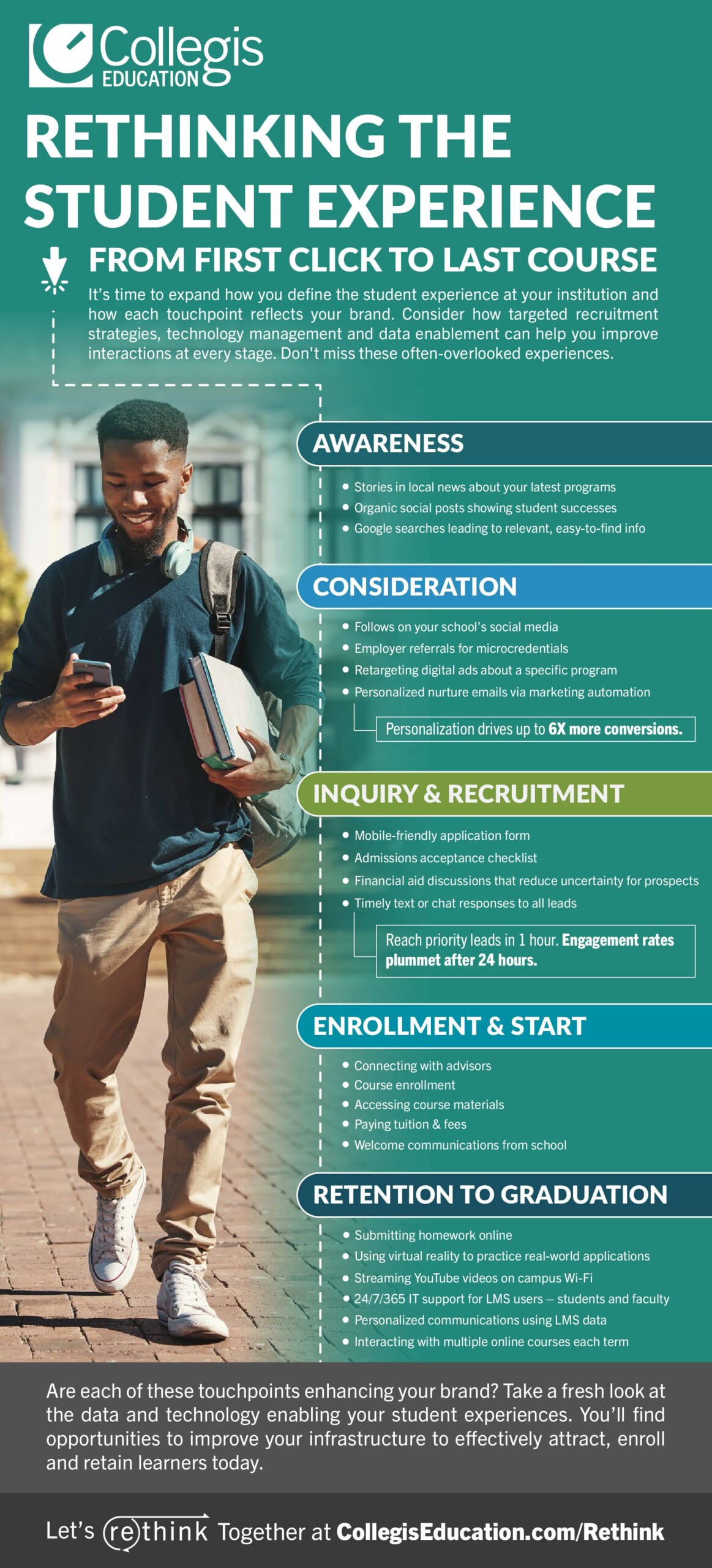
Innovation Starts Here
Higher ed is evolving — don’t get left behind. Explore how Collegis can help your institution thrive.
Focused admissions outreach and paid media
In 2018, Dominican University engaged Collegis Education for support in growing enrollment. Despite a strong brand, the university’s outreach efforts were hampered by data siloed in disparate tracking systems, gaps in admissions team staffing, and the need for data enablement to support marketing and recruitment. Dominican and Collegis collaborated to execute a holistic enrollment growth strategy – informed by data – that focuses on admissions outreach and engagement for graduate and undergraduate students, as well as paid media management, reporting and forecasting for undergraduate and graduate students.
Situation: Enrollment process mapping
To achieve Dominican University’s goal to create a successful enrollment growth strategy for traditional, graduate and online programs, Collegis connected the university’s systems, such as its CRM and marketing analytics platforms, and collected it in one central platform for activation. By mapping Dominican’s enrollment process, Collegis was able to recommend actions to ensure the student journey was optimized and personalized.
The school’s growth strategy prioritized driving first-year undergraduate enrollments and the development of an online Master’s in Social Work program to drive scalable enrollment and revenue growth. It was clear Dominican would need support to refine the student engagement process, increase conversation rates, and manage the maintenance and deployment of online program courses.
Results: Exceeding ambitious enrollment goals
Across the board, the focused efforts outlined in the partner plan showed positive results for fall 2022.
- 31% increase in first-year undergraduate enrollments
- 51% increase in first-year undergraduate acceptances
- 48% increase in first-year undergraduate applications
- 29% above goal for summer/fall 2022 graduate enrollment
Enrollment for first-year undergraduate and summer/fall graduate programs exceeded goals, year over year.

About Dominican University
Institution Type:
Private Catholic non-profit coed university
Location:
River Forest, Illinois
Total Enrollment:
3,066
Goals
- Meaningful outreach and engagement
- Analytics engineered for actionable insights
- Flexible technology systems for students
Challenges
- Siloed data across systems
- Gaps in staffing for admissions team
- Lack of sufficient data for marketing and recruitment
Solutions
- Data Analytics and Enablement
- Web Performance Optimization
- Marketing and Media Management
- Admissions Support Services and Admissions Training
- Course Development and Academic Solutions
Other Case Studies
Transform Challenges Into Opportunities
Facing challenges in enrollment, retention, or tech integration? Seeking growth in new markets? Our strategic insights pave a clear path for overcoming obstacles and driving success in higher education.
Unlock the transformative potential within your institution – partner with us to turn today’s roadblocks into tomorrow’s achievements. Let’s chat.
Data streamlines enrollment process
In an increasingly competitive online degree market, Saint Louis University’s (SLU) School for Professional Studies experienced several years of declining enrollment. While the number of online students has dramatically increased over the past decade, so has the number of online programs offered by institutions, with mega-universities capturing significant market share. In order to address enrollment decline and build a foundation for growth, SLU focused on enhancing and differentiating its programmatic suite while collaborating with Collegis Education to build a frictionless student enrollment experience.
Situation: Continuous improvement model
Over three years of collaborative partnership, Collegis Education and Saint Louis University School for Professional Studies have worked side by side in elevating the student inquiry-to-application journey. This allowed SLU to remove barriers in the admissions process and ensure students have a seamless experience from marketing through enrollment.
By first learning about SLU’s historical practices and operations, Collegis built a comprehensive data foundation to help SLU identify and solve enrollment barriers. Through this data-driven approach, Collegis and SLU were able to establish a continuous improvement philosophy with the goal of streamlining the enrollment process and reducing friction on the prospective student.
Solution: A faster, more equitable experience
With an eye on uplifting the student experience, Collegis audited the enrollment process and took action to ensure students weren’t getting lost in red tape or complicated systems and processes. After diving in, Collegis found that five small steps could make a large difference for SLU:
Position smarter handoffs: Collegis implemented an automated scheduling system for interview hand off from Collegis to SLU, making it easier for students to schedule interviews when it was convenient for them, without having to have an initial conversation.
Speed up the process: Collegis suggested collecting transcripts on the students’ behalf to save them time and keep them better engaged in the admission journey.
Focus on equity: With an eye on inclusion and equity, Collegis believed it was an appropriate time to eliminate deposit and application fees.
Improved data transfer: Collegis supported the migration of all SPS programs to Salesforce to create consistency and smooth data transfer between undergraduate and graduate programs that were previously in separate CRM systems.
Streamline the application process: By reducing the time from acceptance to registration to speed up enrollment, Collegis found that administrative hours were reduced and students were moved through the process quicker.

About Saint Louis University
Institution Type:
Catholic, Jesuit institution
Location:
St. Louis, Missouri
Student Enrollment:
13,287
Services:
- Admissions efficiencies
- Student engagement
- Business process optimization
Key Results:
From Fall 2018 to Spring 2021:
- Applicant inquiries increased over 997%
- Applications increased 189%
- Undergraduate enrollments increased 145%
- Graduate enrollments increased 38%
Other Case Studies
Transform Challenges Into Opportunities
Facing challenges in enrollment, retention, or tech integration? Seeking growth in new markets? Our strategic insights pave a clear path for overcoming obstacles and driving success in higher education.
Unlock the transformative potential within your institution – partner with us to turn today’s roadblocks into tomorrow’s achievements. Let’s chat.
Improving user experience to boost conversion rates
One private university attracted new students by expanding their online offerings. While market research showed there was interest and a growing audience for these online programs, the university wasn’t getting the traffic they needed to these new website pages — and the traffic they did receive wasn’t converting.
Learn how this school optimized their website to improve user experience, increase web sessions and raise the number of web conversions to grow their enrollment.
Situation: Website audit and restructuring
To uncover why this university was experiencing lower-than-expected web traffic and conversions, Collegis investigated their website performance and soon discovered the problem. Over the years, the school’s website had expanded, organized based on internal needs and not on how a student might search for information or navigate the site. This made the site fragmented and full of friction for users — high bounce rates, low time spent on page and poor placement in search results.
As with many schools, our partner didn’t have experts on staff to diagnose the root cause of this issue or effectively fix the problem. In short, the university knew their online prospects weren’t finding the right information to convert, but they didn’t know what to do about it. They needed someone who understood complex web navigation and had the resources to fix it.
To identify where and why prospective students were getting hung up or confused on the website, Collegis performed a full website audit. Our experts tested the user experience to find and remove the barriers that were inhibiting the website — typically a university’s most valuable marketing tool — from performing.
The primary issues were:
- User Confusion with Site Architecture: Programs and modality were organized by the University’s internal processes, not by how a user seeks out the information. This made it difficult and frustrating for a prospect to find what they were looking for.
- Duplicate Pages: Because information was organized under modality silos, some programs had multiple pages of nearly identical information. This duplicate content causes distrust by search engines and lowers the position in a search engine results page (SERP).
- No Program Finder: Program pages are often the most sought-after information on a college’s website. The University didn’t have a single source of all programs — or a way to sort and search them.
Results: Lift in web traffic and conversions
In order to increase web traffic and conversions, Collegis performed and implemented the following:
Local SEO: Simply establishing a consistent name, address and phone number across the website gave search engines confidence that they understand who our partner is, what they do and where they are located.
On-Page Content Optimization: Degree and program pages were redesigned to increase consistency, visibility and conversions. Many had been thin on content, making it difficult for search engines to understand the value of a page and why they should make it visible as a search result.
Improving Calls to Action (CTAs): Placement of CTAs within the application conversion path on the homepage and program pages made it simpler for prospects to apply and request information.
Foundational and Technical SEO: Improvements were made in terms of basic website functionality, such as cleaning navigation, correcting 404 errors and redirects, addressing site speed, improving folder structure and breadcrumb navigation, etc., to drive additional relevancy and authority — and improve visibility within the SERPs.
Institution Type:
Private Religious University
Location:
Midwest
Modalities:
On campus, online hybrid, regionwide
through partnership with community colleges
Services:
- Restructured site architecture
- Streamlined page navigation
- Improved user experience
- Website optimization
- Search engine optimization
Key Results:
- In the first year, the University saw website conversion rates increase 35%, despite the challenges of COVID-19.
- 64% increase in web users moving from homepage to program pages.
- The top three visited sections from the homepage post-launch became the Program, Graduate and Undergraduate sections.
- The site experienced a 13.4% increase in new sessions.
- All programs can now be seen in one place, making it easier to find and compare degree programs.
Other Case Studies
Transform Challenges Into Opportunities
Facing challenges in enrollment, retention, or tech integration? Seeking growth in new markets? Our strategic insights pave a clear path for overcoming obstacles and driving success in higher education.
Unlock the transformative potential within your institution – partner with us to turn today’s roadblocks into tomorrow’s achievements. Let’s chat.


